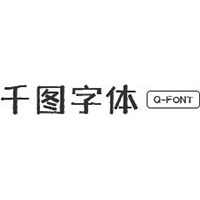Making Fonts: SINDELAR
"Finally I found what I have been looking for – this typeface suits the specific requirements of my project: balanced proportions, space saving and very legible in small sizes. Just the color is a bit too light – if I could only switch to a slightly darker grade …"
Many of us have experienced a situation like this. You believe you have found an appropriate typeface but a small detail doesn't match. That's what happened at the time I was collaborating with international newspaper designer Rolf Rehe and we were about to agree on a text face for a newspaper project. All the characteristics were suitable but the color was not quite right. About then I made the plan that if I eventually designed a newspaper typeface, I would offer a few grades of the Regular weight to choose from. Depending on type size and other conditions (such as column width, leading, tracking, paper, color, printing conditions, etc.) users should be able to pick the grade that best serves their exact circumstances.
Sindelar meets the requirements of contemporary news and media design. It enables users to pick the perfect text colour by offering three different grades of the Regular weight.
Focusing on the users' needs
The idea of offering different text grades was just another practical contribution to my initial plan to design a newspaper typeface. This had evolved over the months and years when I worked at Rolf Rehe's studio in Vienna and was able to profit from the great amount of experience Rolf was willing to share. (In his career he designed newspapers on five different continents.) I gained a deep understanding of the specific conditions of newspaper typography and the crucial qualities of appropriate typefaces. Knowing about users' needs at various levels – users at the level of setting text but even more importantly at the level of reading text – allowed for making the right decisions during Sindelar's development.
Before I started developing Sindelar fonts, I outlined the qualities and characteristics I considered most important and started reflecting on how to achieve them best. The goal was to design a type family that addresses the demands of contemporary news and media design – the ideal choice for extensive text setting in newspapers and magazines.
One of the first sketches for Sindelar, dating from April 2009, Vienna.
Balanced proportions: moderate widths
As with any text face, the foremost quality is legibility. The difficulty in designing a newspaper typeface is to balance this criterion with another important one: getting as much information onto a page as possible. Space saving qualities should not come at the expense of legibility and vice versa. Finding proper proportions is therefore a delicate and challenging process. I was aiming for letters with moderate widths that do not appear narrow; proportions which enable setting a fair amount of letters into one line without giving the impression of being compressed.
Sindelar (top) compared with Adobe Garamond, and Utopia, a popular newspaper typeface. Sindelar is much more economic than Garamond and still more economic than Utopia. (All typefaces are set in type sizes that result in the same x-height.)
Sindelar (top) compared with popular newspaper typefaces. As this comparison clearly shows, Sindelar's space saving qualities are hard to beat. (All typefaces are set in type sizes that result in the same x-height; letter spacing and word spacing are adjusted to similar values.)
Balanced proportions: appropriate heights
Space saving qualities are not only needed horizontally but vertically as well. In newspapers, due to their small columns, keeping line spacing at a minimum is favoured. To enable such a setting without risking collisions, ascenders, descenders and capitals are kept pretty short.
Sindelar (left) and Adobe Garamond set in type sizes that result in the same x-height and with the same line spacing. While with Garamond there are several problems of touching ascenders and descenders (indicated by the circles) Sindelar does well even with tight line spacing.
Sindelar's x-height takes a good portion of the total space one line occupies. Due to its large x-height Sindelar appears as large as possible in a space saving setting (enabled by its short ascenders and descenders).
Sindelar (top) and Adobe Garamond set in type sizes that result in the same x-height. While Sindelar's x-height is around 54 % of the hp-height (100 %), Garamond's x-height measures only 41 %.
Keeping the ascenders and descenders short also offers the advantage that the letters' widths appear less narrow than if the ascenders and descenders were tall.
Sindelar (left) compared with two modified versions. From left to right the ascenders and descenders grow. As indicated by the rectangles, the ratio between the letters' widths and heights changes: the longer the rectangle, the narrower it appears.
Low, but noticeable contrast
The amount of contrast is a crucial quality of a typeface. (Contrast describes the amount of weight difference between the thin and thick parts of the letters.) A typeface for newspapers needs to work well in very small sizes, therefore its contrast has to be rather low. Otherwise the thin parts of the letters would almost disappear and seriously harm the legibility in small sizes. The low contrast leads to a general robustness and to strong serifs.
Sindelar (left) and Didot set in type sizes that result in the same x-height. Didot's high contrast is not a problem at large sizes but creates enormous problems and harms legibility at small sizes. Sindelar is easily legible even at very small sizes.
Looking at the contrast we can see that Sindelar is a transitional typeface. The axis is somewhere between diagonal and vertical which is a perfect choice for a robust and space saving newspaper typeface. (Other newspaper classics such as Charter, Times and Utopia are found in this category too.)
Sindelar (middle) compared with Adobe Garamond and Didot. While Garamond has a diagonal axis and Didot a vertical one, Sindelar's axis is somewhere in between.
Various grades and weights
As outlined above, Sindelar comes with three text grades that vary in weight only slightly: Regular A, B, and C. Depending on the exact conditions, either of these three may be the perfect choice. Using two of these grades alongside one another is also a possible application. (For instance, using Regular A for the main text and Regular C for the marginal notes.)
Sindelar comes with three grades of Regular, that differ in weight only slightly: Regular A, B, and C. Depending on type size and all other relevant conditions users can choose the grade that serves the exact circumstances best.
Next to these three grades of Regular, Sindelar spans a weight spectrum ranging from Medium to Extrablack. Sindelar comes in 18 styles in total: nine weights in Roman and Italic each. Each font is equipped with a large character set of about 980 glyphs and various OpenType features.
Sindelar comes in nine weights in Roman and Italic each.
Various styles of Sindelar. This sample gives a good overview of Sindelar's qualities. Although optimised for small sizes, Sindelar's low contrast and robust serifs give the typeface a strong impact and an unmistakable personality in larger sizes.
From Regular A to Extrablack the weight increases in a larger portion towards the inside of the letters (the counters). Adding the weight in this way maintains the space-saving qualities of the typeface.
Overlaying Sindelar's nine weights demonstrates that the typeface remains economic throughout all styles.
True, perfected Italics
Sindelar's italic letters are inclined by slightly different angles, respecting the letters' shapes and proportions and resulting in a balanced, yet vivid appearance. The inclination varies from eight to nine and even ten degrees. The taller a letter the less the inclination: capitals and letters with ascenders or descenders are less inclined. (The longer a shape the more obvious the inclination appears.) Letters which optically create a hint of 'rotation' due to their serifs are inclined by one degree more (if they appear to rotate counterclockwise) or one degree less (if they appear to rotate clockwise).
Early sketches for Sindelar Italic, based on calligraphy, dating from August 2009, Vienna.
The Italic has three different angles of inclination: eight (magenta), nine (grey), and ten degrees (cyan). Letters such as the "i" which create an impression of counterclockwise rotation (due to their serifs' positions) are inclined by ten degrees.
Soft curves, hard edges
As with my first type family, Acorde, also Sindelar offers a lively contrast between soft curves and hard edges. This gives Sindelar a versatile impression of structure and liveliness.
Sindelar offers a balanced ensemble of sharp and soft shapes, abrupt and rounded stroke endings.
For all media
A text face addressing the demands of contemporary news and media design has to be suited for text setting on paper and on screen alike. All decisions were made keeping both media in mind. (Webfonts will be available soon.) During its development I set Sindelar as the default font in my browser and e-mail program, which enabled me to test its legibility in everyday life. Interestingly even spam started looking authentic and familiar from then on.
Testing Sindelar on screen: Sindelar as the default font in my browser.
A prestigious name
The type family is named after famous Austrian football (soccer) player Matthias Sindelar (1903–1939), one of the best players of his time. His name is a perfect match since they share two major qualities: their technical brilliance and their way of performing aesthetically to the last detail. In addition this is also a nice way of connecting two of my passions, football and type design. The football player's nickname »Der Papierene« (the Paper-man) elegantly refers to the media too.
Short bio of Matthias Sindelar, set in Sindelar Regular A and Sindelar Bold.
An ideal companion to Acorde
Sindelar is an ideal companion to my first type family, Acorde fonts. Although I developed Sindelar fonts without aiming to create a serif companion to Acorde, they complement each other perfectly well. During Sindelar's development I focused on the purpose and conditions Sindelar is meant for and made all decisions independent of Acorde. That resulted in Sindelar being a transitional typeface with a slightly diagonal contrast while Acorde is a humanist sans serif based on the contrast of the broad nib pen. But some decisions were made in similar ways for both typefaces. For instance, the vertical proportions of x-height and capital height are similar and the distribution of adding weight from Regular to Extrablack is done in a related way. I guess that's why they go very well with one another: They share a fair portion of similarities and differ in other characteristics. This makes using both type families alongside one another harmonious without being monotonous.
[Sindelar fonts are available from MyFonts]
-
 ShanhaiFonts
ShanhaiFonts
Brand:山海字库
Area:China

-
 Cangji Fonts
Cangji Fonts
Brand: 仓迹字库
Area: China

-
 JT Foundry
JT Foundry
Brand: 翰字铸造
Area: Taiwan, China

-
 Handmadefont
Handmadefont
Brand:
Area: Estonia

-
·千图字体
-
 HyFont Studio
HyFont Studio
Brand: 新美字库
Area: China

- ·Troubadour poster, Opera Plovdiv
- ·Königsblut identity
- ·"David Bowie is turning us all into voyeurs" button
- ·Benetton identity redesign
- ·New York New York, Jazz St. Louis
- ·The Form Book by Borries Schwesinger
- ·Sinnesreize / Embracing Sensation by Silvia Gertsch and Xerxes Ach
- ·How to Read a Painting by Patrick de Rynck
- ·Jim Nutt: Coming Into Character at Museum of Contemporary Art Chicago
- ·Ad for Vincebus Eruptum by Blue Cheer
























